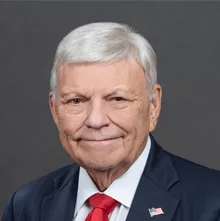The Bureau of Labor Statistics (BLS) reports that construction employment remained steady through the second quarter and remained relatively unchanged at the beginning of the third quarter. Year-over-year construction employment is up by approximately 2.8 percent and the jobless rate declined from 4 percent to 3.8 percent. Employment year-over-year for specialty contractors experienced the most significant improvement among the sectors measured with a 3.5-percent increase, according to the BLS.
Tight labor markets for skilled tradesmen remain a current and long-term constraint on construction projects in all sectors of the PVF industry.
The U.S. Energy Information Administration (EIA) is forecasting the global oil market to remain in balance in the third and fourth quarters of 2019. The EIA’s Short-Term Energy Outlooks forecasts Brent crude spot pricing will average $64/barrel (bbl) during the second half of 2019 and $65/bbl in 2020. These prices reflect EIA’s expectations for a balanced global market. There are, however, risks for supply disruptions and lower economic growth.
The EIA expects West Texas Intermediate crude oil prices to average $5.50/bbl less than Brent prices through the second half of the year and into 2020, narrowing from the $6.60/bbl spread during July. This reflects EIA’s assumption that crude oil pipeline transportation constraints from the Permian basin to the Gulf Coast will ease in the coming months as new takeaway capacity comes on line.
The EIA forecasts natural gas spot prices at the Henry Hub to average $2.36/MMBTU in the second half of this year. This price is $0.14 lower than expected in July, reflecting strong growth in production and recent price movements.
Capital Expenditures
With EIA forecasts in mind, including the risk factors noted, the oil and gas industry is confident in its decision to move forward with capex programs.
Appalachian oil and gas activities continue to contribute to the U.S. energy renaissance not only in terms of rising tight-gas production but also improving petrochemical opportunities, says U.S. Secretary for Fossil Energy Steven Weinberg.
The impacts of this renaissance are evident across the Marcellus and Utica plays in Appalachia. It is already responsible for 85 percent of the growth in U.S. gas production over the past decade and accounting for “right at a third of U.S. production today,” Weinberg notes, adding that share should reach 45 percent by 2040.
Much of the Appalachian gas is “wet” with substantial volumes of natural gas liquids. The region also is poised to become a critical U.S. petrochemical region, Weinberg says.
The Appalachian Petrochemical Renaissance has the potential to create more than 100,000 new jobs in the region, generate tens of billions in revenue annually, reinvigorate regional manufacturing along with enhancing our energy security.
Today, the Marcellus and Utica shale reserves are within a day’s drive to 70 percent of the nation’s polyethylene market. Nearly a third of the country’s manufacturing involving petrochemicals is within 300 miles of Morgantown, W.Va. This base creates $300 billion in revenue, employs 900,000 workers, supports 7,500 businesses and is positioned to grow.
Northeast Supply Enhancement Project
Williams Cos. Inc. is moving ahead with pipeline construction projects to bring natural gas to the transmission-starved northeastern U.S. states. Williams is facing regulatory and permitting headwinds in the region. In May, New York regulators denied permission to the Northeast Supply Enhancement project, which includes 23 miles of submarine pipeline off the New York coast, citing water-quality concerns and aquatic life. In June, New Jersey’s Department of Environmental Protection rejected permits, including waterfront development and wetlands work.
Williams’ Northeast Supply Enhancement project would carry natural gas from Pennsylvania to the New York City metro area. This project would supply gas utility National Grid, which in May announced it would not be able to process new service requests in Brooklyn, Queens and Long Island due to the lack of gas supply.
Williams notes that both states have accepted their reapplication permits. The 401 certifications are essential to begin construction in the fall. CEO Alan Armstrong says, “We fully expect a positive decision will come in time for us to maintain our in-service date just ahead of the 2020-2021 winter peaks.”
The company also is making progress on its Leidy South project, a proposed 580-million-cubic-foot-per-day expansion of Williams’ existing Pennsylvania infrastructure that will further connect Appalachian gas with the growing demand center along the Atlantic seaboard in time for the 2021-2022 heating season.
Gulf Coast PVF Projects
Houston remains the epicenter for companies generating major projects impacting the PVF industry in the Gulf Coast region and beyond.
During the second quarter, Cheniere Energy’s (Houston) governing board made a final favorable decision on a $2.5 billion investment in the Train 6 project at the company’s Sabine Pass site in Cameron, La. Cheniere is upbeat despite the short-term low liquid natural gas (LNG) markets. Construction is planned to kick off in the fourth quarter of 2019 on the 4.5 million-metric-ton-per-year LNG train. Bechtel was selected as the engineering, procurement and construction contractor.
Plains All American Pipeline LP (Houston) increased its capex outlook for 2019 by $150 million, pushing ahead with crude oil takeaway projects in the Permian Basin and other regions.
Pre-construction activities have been initiated on the Red Oak pipeline (50:50 JV) with Phillips 66, which will connect the pipeline hub at Cushing, Okla., to multiple locations along the Gulf Coast. Construction is expected to begin on the 400,000 bbl/day, 430-mile pipeline in mid-2020.
Crestwood Equity Partners LP (Houston) is continuing strong expansion programs in the Bakken and Powder River Basin. It is increasing both its gathering and natural gas processing capacity. It has more than $1 billion in active projects.
Among them is the addition of a train at its Bucking Horse natural gas processing plant in Wyoming. The 200-million-cubic-foot-per-day train will increase total processing capacity to 345 million cubic feet per day. Full construction is set to start late this quarter or early in the third quarter.
Because of current market conditions, pending litigations and possible tariffs (pending negotiations), it is recommended that you keep in close contact with your suppliers regarding pricing and availability.
PVF Roundtable: Terry Bradshaw at October Meeting
The next networking meeting of the PVF Roundtable is scheduled for Oct. 15, beginning at 4:30 p.m. CDT. The venue is The Houston Marriott Westchase, 2900 Briarpark Dr., 844-419-4681.
This meeting will consist of a networking session with an open bar followed by a sit-down dinner. Our guest speaker for the evening will be Terry Bradshaw, renowned quarterback and four-time Super Bowl champion of the Pittsburg Steelers. He spent his collegiate career playing at Louisiana Tech. He was inducted into the Pro Football Hall of fame in 1989, his first year of eligibility. His induction into the College Football Hall of Fame occurred in 1996.
Please refer to the PVF Roundtable website (www.pvf.org) to register early for this very popular event.
The board of directors urges you, and your associates, to attend the networking meetings. This platform provides the opportunities of keeping up with current market conditions, developing opportunities, developing trends and expanding your network of valuable contacts.
Correction: I have been advised that a misspelling of Clayco Inc.’s design and build project in Dayton, Tenn., appeared in last month’s article. The correct spelling of the name of the tire plant is Nokian Tyre. I thank Oliver Muenster-Winkler, director of communications at Clayco, for bringing this to my attention.






